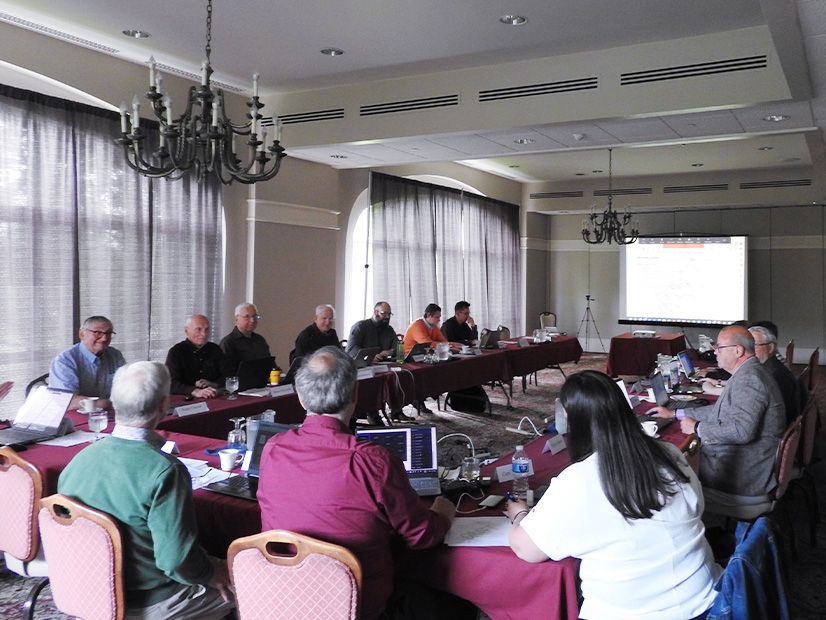Emergency Operating Procedures
ALBANY, N.Y. — New York’s installed reserves margin (IRM) study may be overly optimistic in its emergency assistance assumptions, according to a presentation given to the New York State Reliability Council’s Executive Committee (NYSRC EC) on Friday.
NYSRC Installed Capacity Subcommittee members said preliminary discussions about a forthcoming white paper, which examines how emergency operating procedures are implemented and modeled, indicate that “conditions are tight” and that NYISO and neighboring systems are all counting on one another to provide resources in the same emergency situations.
The IRM study shows New York requiring substantial assistance in emergencies, mainly from IESO in Ontario and ISO-NE. But during tight real-time conditions, PJM typically supports New York, while IESO and ISO-NE rely on New York for export support, which could create supply problems across the Northeast during future emergencies.
ICS Chair Brian Shanahan shared how “other area’s resource adequacy models generally have lower emergency assistance assumptions, compared to what we use,” adding that “that’s putting pressure on system and resource adequacy conditions.”
Industry participants are concerned that winter could emerge as a peak period, leading to increasingly tight conditions during the season, Shanahan said.
Some attendees at the EC meeting criticized the ICS’ characterization as being too unspecific.
One attendee said “generalizations are really fraught with danger, and so we need to look specifically at each area to understand what their circumstances are and what they model.”
Howard Kosel, manager of energy management resource analysis at Con Edison, said “the statement that we’re overly optimistic on what we’re relying on to get from our neighbors is a very broad statement.”
NYISO is developing ways to adjust its modeling to account for seasonal area-specific limits to minimize future interregional disruptions. It plans to present more details about the issue at the next ICS meeting.
NYSRC Elections
The EC unanimously reelected Chris Wentlent and Mark Domino as chair and vice chair, respectively.
The NYSRC EC consists of 13 members: six representatives of current transmission owners, one wholesale seller representative, one representative of the large consumers sector, one representative of the municipals and electric cooperatives sector, and four members unaffiliated with any market participant.
The four unaffiliated members also were reelected to serve another two-year term, and all other representatives — except for the wholesale seller representative — were approved.
Wholesaler sellers are still in the process of selecting their representative, and a vote remains pending.
OSW Wind Petitions
Wentlent updated the EC about petitions submitted to the New York Public Service Commission by several renewable developers who asked for permission to amend their offshore wind renewable energy certificate (OREC) agreements due to recent inflationary pressures (15-E-0302 and 18-E-0071). (See OSW Developers Seeking More Money from New York.)
ORECs are contracts in which the New York State Energy Research and Development Authority agrees to compensate developers for the environmental benefits stemming from the electricity generated by OSW projects.
Wentlent said the issue is important because it will affect how quickly New York can replace retiring resources with new, clean generation.
NYISO has repeatedly warned that retirements pose a threat to supply adequacy. (See NYISO CEO Warns of Tightening Resource Adequacy.)
“The timing of when new resources show up and how we deal with decisions on existing resources becomes even more critical,” he said.
Inverter-based Resources Standard
NYSRC’s Reliability Rules Subcommittee hopes to finalize a proposed rule establishing minimum requirements for inverter-based resources over 20 MW by September, according to a draft road map shared with the council.
The subcommittee will revise PRR-151 based on previous stakeholder comments and then consider reposting the draft rule for additional comments in early July. (See “Inverter-based Resources Standard,” NY State Reliability Council Executive Committee Briefs: May 12, 2023.)
“This is a big deal and has got the attention of everybody across the industry,” subcommittee Chair Roger Clayton said.
“We’re in the vanguard in implementing this thing, and so we need to be comprehensive and take our time to get it right,” he added.



